Rod Miller's Blog
November 28, 2025
Drovers
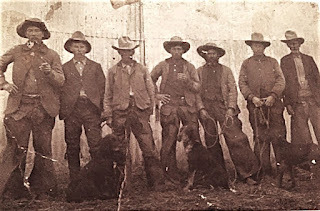
Friend andfellow poet Linda Kirkpatrick of the great state of Texas sent the abovepicture to me a while back. It looks, does it not, like a typical old-timephoto of a band of cowboys.
But it’snot. The photo is of men from her part of Texas who were “Hog Drovers.”
Well,having had some experience with pigs in my youth (Utah State Junior LivestockShow Fitting and Showmanship Champion in the pig division, 1970) it piqued mycuriosity. It makes perfect sense, but it had not occupied much of my mind,that in days gone by, before railroads and trucking came along, hogs—likecattle (and sheep, goats, ducks, geese, turkeys, horses, and mules)—had to bedriven to market.
Tennesseeand Kentucky were big pig-raising states, and the fattened animals would bedriven through the mountains to eastern markets. In 1847 alone, 51,753 hogspassed through a single tollgate in North Carolina. As many as 100,000 hogswere driven from Kentucky to Richmond, Baltimore, Philadelphia, and otherpoints east in any given year. Hog drives were common throughout the country.
Porkers couldmove along on their trotters about ten miles a day, led by a horseback droverand herded by other drovers, about one for every 100 hogs in the herd. Herdsizes ranged from a few hundred to a thousand pigs. “Wagon stands” along theway would corral, feed, and water the hogs overnight.
There’s abetter than even chance that the photo Linda sent may inspire a future novelfeaturing the adventures and antics of our friend Rawhide Robinson. We’ll see ifthat pig can fly.
October 30, 2025
My favorite book, Part 31

There isno shortage of novels about violence in trail drive cowtowns. Some are wellwritten. Most are fairly predictable, even some that are well written. But toomany of them rely on the clichés and stereotypes and nonsense we have all been fedtoo much in shoot-’em-up books and movies and TV shows.
Bloody Newton by Johnny D. Boggs is different. It won a Spur Awardfrom Western Writers of America and deserves the honor.
The storyrevolves around an actual incident, the Tuttle’s Dance Hall Massacre of 1871.(Also known as the Newton Massacre and the Hide Park Gunfight.) The newborntown of Newton, Kansas, is attracting Texas cattle herds to the railhead there,making the place as wild and woolly as any Old West town.
The authorenriches his tale with parallel stories of a family of Texas cowboys, a womanrestauranteur struggling to set up shop in Newton, and a newspaper woman fromthe Wichita Times who was more-or-less exiled to Newton in order to gether out of the editor’s hair.
As theindividual stories build, they are braided together toward a fascinatingclimax. The period detail is well rendered, the characters are believable anddistinct, and the violence is rendered so masterfully that it can cause chills.
It’s hardto go wrong with any novel that says Johnny D. Boggs on the cover. But, for me, Bloody Newton is among the author’s finest work,right up there with Northfield, one of my all-time favorite Westernnovels.
October 1, 2025
Talk show time.
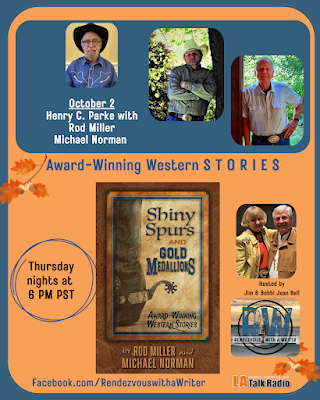
Just abrief reminder (for myself, as well as you) that I will be appearing withfriend and author Michael Norman on Rendezvous with a Writer Thursday, October 2, at 7:00 p.m.Mountain Time on LA Talk Radio. We’ll be talking with hosts BobbiJean and Jim Bell, and True West magazine film editor Henry Parke, aboutour new collection of Western stories, Shiny Spurs and Gold Medallions.
The book features short stories honored by Western Writers ofAmerica Spur Awards, Will Rogers Medallion Awards, Western FictioneersPeacemaker Awards, and other recognition. And, there are some new stories inthe collection that—with luck—may receive recognition of their own.
It will beeasy for you to listen (and look) in. Click on this link to LA Talk Radio or this one for the Rendezvous with a Writer Facebook page for the podcast on October 2 at 7:00p.m. Mountain Time. The recorded program will be available at both those sitesafterward and probably forever.
See youthere.
September 23, 2025
When things gang aft agley.
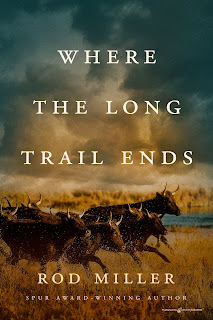
Storms, stampedes, river crossings, andrustlers ride through the pages of Where the Long Trail Ends—alongwith the poetry of Robert Burns.
Joaquin Ignacio MacDonald is a Texas cowboydescended from a white plantation owner, black slaves, and a Mexican mother.The only thing he owns from his distant white ancestor is his surname and astolen book of poetry passed down through the generations. The poetry leads tofriendship with a young woman named Elspeth, which costs him his job at a ranchowned by a Scottish syndicate and managed by her father, Duncan Cameron.
Crippled in a horse wreck at his new job, Joaquin turns to cooking, and runsthe chuckwagon on a cattle drive up the Chisholm Trail, leading to renewedconflict with Cameron. Thrown together by a bullet wound, the two men tussleover a troublesome past and uncertain future.
The titleof the book, Where the Long Trail Ends, comes from a poem by George Rhoades,who, long ago, was one of my college journalism professors. We werereacquainted a few years back when traveling through the world of cowboypoetry, and the Professor kindly allowed me to borrow his words.
There’s alot that happens in the pages of Where the Long Trail Ends,my newest novel from Speaking Volumes. Much of it is unexpected andsurprising, and certainly unusual in a Western novel. I think you’ll enjoy theride.
September 12, 2025
Online interviews on the way.

TheInternet will be awash with writer Rod Miller in the weeks ahead.
First, tune in to Matthew Pizzolato’s DustyTrails and Tall Tales podcast Thursday, September 18, at 5:00 p.m. MountainTime (your time zone may vary). You’ll hear (and see) a panel discussion abouta recent anthology of short fiction, SilveradoPress Presents: Western Stories by Today’s Top Writers.
On the panel will be Jeff Mariotte, editor and publisher (as well as an author)of the anthology, contributing authors Del Howison and Kelli Fitzpatrick, andyours truly.
In addition to discussing the anthology, the conversation may range to what thevarious writers are up to, and maybe what we think about western books and movies.It’s anybody’s guess. My contribution to the anthology is a story titled “TheIncident Above Mentioned,” historical fiction about the beginning of The BlackHawk War in Utah in April of 1865.
Tune in (or log in) Thursday, September 18, at 5:00 p.m. Mountain Time for DustyTrails and Tall Tales.
Then, twoweeks later, listen to (and watch) LATalk Radio when hosts Bobbi Jean Bell and Jim Bell, with guest host HenryC. Parke, Film Editor for True West Magazine, will interview author MichaelNorman and me on the Rendezvous With AWriter broadcast. The topic of discussion will be our recently releasedcollection of award-winning short stories, ShinySpurs and Gold Medallions. The two-author collection includes storiesthat have won and been finalists for the Western Writers of America Spur Award,Will Rogers Award Medallions, the Western Fictioneers Peacemaker Award, andother recognition.
You can hear and see the interview live on Thursday, October 2, at 7:00 p.m.Mountain Time (again, your time zone may vary) at LA Talk Radio. The next day, the programwill appear on the RendezvousWith A Writer Facebook Page.
Tune in, log in, or link in to these interviews and discussions with Westernwriters for some thoughts about writing about the American West that may setyou to thinking.
August 29, 2025
Stupid question.

Long, longago, when I was a student in journalism school, we learned about interviews.The whole point was to learn to ask probing questions, learn to ask follow-upquestions on the fly, ask questions requiring more than “yes” or “no” answers,ask again when someone dodges a question, ask for additional information toprovide context to answers to questions, and so on.
You’llnote two words are repeated several times: “ask” and “question.” That, we weretaught, was how reporters and writers and journalists and broadcasters and talkshow hosts and others in the interview business conduct business—by askingquestions.
It seemsto be a lost art nowadays. Seldom do I hear interviewers ask a question. Now,it seems, the method-du-jour is to give orders. Instead of asking, you tellthe person you are interviewing to “talk about” this and “talk about” that.Talk about, talk about, talk about. It doesn’t seem to matter if it’s breakingnews, hard news, political reporting, sports interviews, talk shows, paneldiscussions, or whatever. Interviewers seldom seem to ask questions anymore.Instead, it’s “talk about.”
Talk aboutthis. Talk about that. Talk about, talk about, talk about.
Whateverhappened to questions and answers? I suppose that’s a stupid question intoday’s world. I guess I should say, “Talk about the demise of asking questionsin interviews.”
August 1, 2025
Double Header.
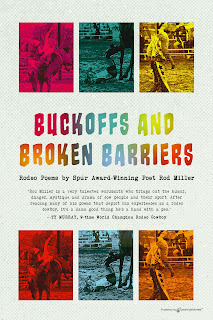
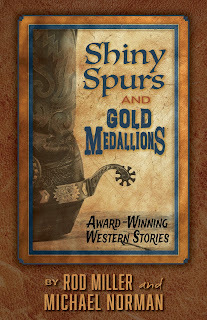
Two new books to tell about.
A collection of rodeo poems, Buckoffs and Broken Barriers , written over the years is nowavailable online in paperback and eBook. The poems range from humorous towistful and everywhere in between, and all are the result of years spent riding,working, or watching rodeo. Some are based on actual events. Others ought to be,even if they’re not.
Nine-time World Champion Rodeo Cowboy Ty Murray read the book, and had this tosay:
“Rod Miller is a very talented wordsmith who brings out the humor, danger,mystique and drama of cow people and their sport. After reading many of hispoems that depict his experiences as a rodeo cowboy, it’s a damn good thinghe’s a hand with a pen.”
Coming mid-August is a collection of short stories, Shiny Spurs and Gold Medallions , co-authored with friend and fellowwriter Michael Norman. Many of the stories are awardwinners or finalists for those honors, or recipients of other noteworthyrecognition. There are Spur Awards from Western Writers of America, Medallionsfrom the Will Rogers Medallion Awards, Peacemakers from Western Fictioneers,and other honors some of our stories have been fortunate enough to receive. Wecollected those award winners and finalists, wrote some new stories, and putthem together in this two-author collection.
Michaelis author of several modern-day Western mystery novels, and also writes shortstories. Most are historical tales about the Apache wars in the Southwest. Mystories run the gamut in setting, subject, and setting, and style. The book is aThorndike Press large-print edition, available from online booksellers as wellas on the shelves at many libraries.
Whether your taste runs to poetry or short fiction or both, you’ll find Buckoffs and Broken Barriers and Shiny Spurs and Gold Medallions enjoyable. You’ll get a taste ofarena dirt, feel the heat of the southwestern deserts, and hear the creak ofsaddle leather. You’ll find a touch of anxiety and anticipation, some fear anduncertainty—and even the occasional laugh.
June 30, 2025
Word camedown last week that Wallace McRae is dead. He wa...
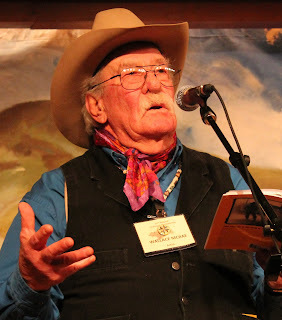
Word camedown last week that Wallace McRae is dead.
He was among the handful of cowboy poets behind the rebirth of our art andcraft in the mid-1980s, and his passing is a loss from which we will neverrecover.
The word “curmudgeon” was as firmly affixed to McRae as his bushy mustache, andit was a description I believe he carried with pride. To many, he came acrossas gruff. But underlying that gruffness were two simple facts: he had a lowtolerance for bullshit, and he did not suffer fools gladly.
McRae was a poet. More than a mere rhymer, jokester, versifier, or entertainer,he wrangled words to create well-crafted poetry that spoke of the West inlayers that plumbed the depths, asking questions and demanding thought. Youwill not find among his work the cheap emotion, the manufactured pride, the manipulativehumor so often found in cowboy poetry.
I did not know McRae well. We were well enough acquainted to speak, but it’snot like we were drinking buddies. Back in 2016, he agreed to be interviewedfor a magazine article I was working on, and we had a good, long talk at theNational Cowboy Poetry Gathering in Elko, Nevada. I got what I needed for thestory, and I got a lot more than I expected.
We talked about his early exposure to poetry, including his first publicrecitation at age four at a community Christmas celebration. And his exposureat an early age to one of the greatest cowboy poets of all time: “We got alivestock publication, my dad did, I don’t know what the title of it was, butit had a monthly Bruce Kiskaddon illustrated poem in it. . . . I knew Kiskaddonbefore I could read.”
I asked his opinion on what Kiskaddon and other earlymasters—Badger Clark, S. Omar Barker, and others—might think of today’s cowboypoetry. “My guess is, I think they would for the most part feel that we’retrying hard. But maybe not measuring up. Because so few people are trained nowin writing. They haven’t read the classics. We haven’t studied the art enough.. . . I don’t think there’s enough of us that study poetry.”
McRae’s honors are too many to mention. But his legacy is one we shouldtreasure—and we could all benefit from reading and rereading and studying hispoetry. He was one of the best of us. And now he is gone.
June 19, 2025
Peacemaker Finalist!
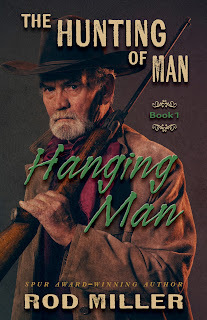
Western Fictioneers—anorganization formed in 2010 by professional Western writers to preserve, honor,and promote traditional Western writing in the 21st century—recently announced theannual Peacemaker (named for the iconic Colt revolver) Awards. My book, HangingMan: The Hunting of Man Book 1, was a Finalist for Best Western Novel.
Ernest Hemingway once wrote, “There is no hunting like the hunting of man, andthose who have hunted armed men long enough and liked it, never care foranything else thereafter.”
That quotation seemed a good description for a bounty hunter, and Matt Crowderwas born. A middle-aged former Deputy United States Marshal turned bountyhunter, Crowder is relentless in his pursuit of justice—although, at his age, hewould rather not sleep on the ground anymore if he can help it.
In HangingMan, Crowder comes upon a man hanging from a tree in an isolated areaand pursues the mystery of who he is, why he died, and who killed him. He chasesthe two men he believes responsible, and along the way discovers graft and corruptioninvolving the US Army, and in a chance encounter captures another wanted man.
In RunningMan: The Hunting of Man Book 2, and HidingMan: The Hunting of Man Book 3, Matt Crowder’s adventures lead himacross the Old West on the trail of other outlaws.
April 22, 2025
History repeats itself.
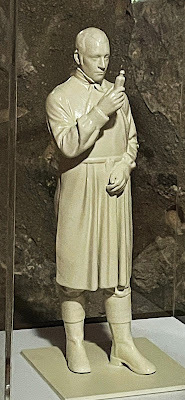
Not longago, while visiting the Long Barracks Museum at the Alamo in San Antonio,Texas, we came across this statue. It’s not a big statue, only 18 inches highor so, and displayed in a clear plastic box. There are other statues of asimilar size throughout the short tour of the Long Barracks. This one depicts apadre—a priest or clergyman of some sort (we didn’t get his name) from thelong-ago days before the Alamo became the Alamo and was known as the MissionSan Antonio de Valero.
Whatintrigues me about the statue is that it proves beyond doubt that historyrepeats itself; that the more things change, the more they stay the same.
Becausewhat the statue clearly depicts is a padre with his handheld digital device.And he is doing, way back then, the same kind of thing you see happeningeverywhere, all the time, today.
Maybe heis engaged in a phone call on speaker. Perhaps he is sending (or reading) atext message. It could be that he is using the camera function to take aphotograph—maybe even a selfie.
Could hehave gotten an alert on one of his social media platforms? Is he responding tosomething on Facebook or Instagram or TikTok or the wreck formerly known asTwitter?
Since heis some kind of Catholic clergyman, it is probably a safe bet that he is not perusinga dating site or matchmaking service. I suppose he could be checking theweather forecast. Or he might be watching cute cat videos on YouTube.
By way offull disclosure, I don’t have any kind of handheld digital device myself, sothis is only totally ignorant, wholly uninformed speculation on my part.



